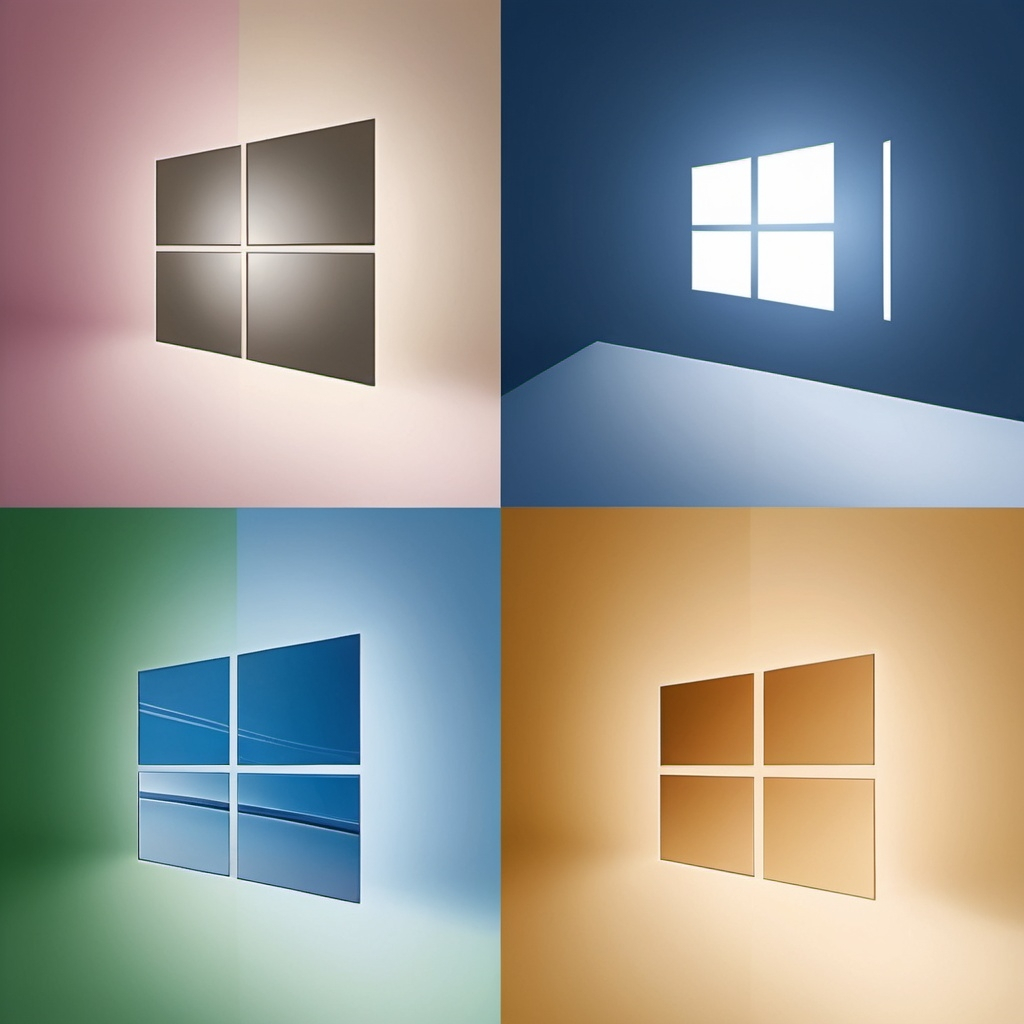The Birth of a Digital Giant
Windows is a common word today. Everyone loves or hates windows. The operating system that has been here since early 1990’s (at least for us to experience it visually) was here to conquer. I’ve used every OS that Microsoft launched post Windows 3.1 and believe me it was an experience in itself. Those good ‘ol DOS days were almost over. Linux and unix were still being developed. With that said, in the vast, sprawling landscapes of technology, few names resonate as profoundly as Windows. A beacon of innovation and a cornerstone of the modern computing world, the Windows operating system has etched its legacy into the annals of history. It is a tale of evolution, ambition, and relentless pursuit of excellence, transforming the very essence of human-computer interaction.
A seed was sown, in the fertile ground of dreams, A vision of a future, where technology gleams. From humble beginnings, a giant took flight, In the corridors of Microsoft, on a starry night.
The Dawn of Windows 1.0
The journey began in the early 1980s when Microsoft co-founder Bill Gates envisioned a graphical user interface (GUI) that would revolutionize the computing experience. Up until that point, operating systems were primarily text-based, requiring users to input commands manually. Gates saw a future where users could interact with their computers more intuitively through graphical elements like windows, icons, and menus.

In 1985, this vision materialized as Windows 1.0. While primitive by today’s standards, Windows 1.0 was a groundbreaking innovation. It featured a simple GUI and allowed users to multitask using a rudimentary window management system. Despite its limitations, it laid the foundation for what was to come.
In the echoes of a dream, the first lines of code were spun, A dance of logic and creativity, a revolution had begun. Windows 1.0 emerged, a humble, nascent form, A promise of tomorrow, through the digital storm.
Windows 3.0 and the Rise to Prominence
The subsequent versions, Windows 2.0 and Windows 2.1, introduced improvements but it was Windows 3.0, released in 1990, that truly marked a turning point. Windows 3.0 brought enhanced performance, improved graphics, and a more user-friendly interface. It captured the imagination of users and developers alike, solidifying Windows’ place in the computing landscape.
This version introduced Program Manager, File Manager, and Print Manager, tools that would become staples of the Windows experience. The success of Windows 3.0 paved the way for the dominance of Microsoft in the PC market, a position it still holds today.
With Windows 3.0, a symphony began to play, A melody of progress, in the light of day. Program Manager and icons, a user’s delight, Guiding us gently, through the digital night.

Windows 95: A Quantum Leap
In 1995, Microsoft unveiled Windows 95, a monumental leap forward in the evolution of operating systems. It integrated the MS-DOS operating system with a new and improved GUI, offering features like the Start button, taskbar, and a more sophisticated file system. Windows 95 was not just an upgrade; it was a reimagining of what an operating system could be.
The launch of Windows 95 was accompanied by an unprecedented marketing campaign, making it a cultural phenomenon. It introduced features such as Plug and Play, which simplified the installation of hardware, and it was the first Windows version to support long file names. The impact of Windows 95 on both the market and the user experience was profound, cementing Microsoft’s dominance.
In the realm of innovation, Windows 95 stood tall, A beacon of ingenuity, answering the call. Start buttons and taskbars, a world redefined, In the hearts of millions, its legacy enshrined.
The Evolution Continues: Windows XP, Vista, and Beyond
The turn of the millennium saw the introduction of Windows XP in 2001, a beloved operating system known for its stability, user-friendly interface, and enhanced multimedia capabilities. Windows XP was a fusion of the best elements from its predecessors, built on the Windows NT kernel, and offered a robust and reliable platform for both home and business users.
However, not all was smooth sailing. The release of Windows Vista in 2006 was marred by performance issues, hardware compatibility problems, and a lack of compelling features compared to its predecessor. Despite its shortcomings, Vista introduced important security features and a more modern aesthetic, paving the way for future improvements.
Windows 7, released in 2009, was a resounding success, addressing many of Vista’s shortcomings and bringing a refined, responsive, and visually appealing interface. It quickly became the preferred operating system for millions, thanks to its performance improvements, enhanced taskbar, and overall user experience.
Through peaks and valleys, the journey pressed on, With XP’s glory and Vista’s dawn. Windows 7 emerged, a phoenix in flight, Restoring faith, with elegance and might.
Windows 10: A Unified Vision
Windows 8, released in 2012, marked another bold move by Microsoft, introducing a touch-friendly interface designed to unify the user experience across desktops, tablets, and smartphones. However, the drastic changes, including the removal of the traditional Start menu, were met with mixed reactions.
Learning from this feedback, Microsoft launched Windows 10 in 2015, an operating system designed to cater to a wide range of devices while addressing user concerns. Windows 10 reintroduced the Start menu and combined the best features of Windows 7 and Windows 8, creating a cohesive and versatile platform. With features like Cortana, the Edge browser, and continuous updates through the Windows-as-a-Service model, Windows 10 has become a mainstay in the digital world.
From the lessons of the past, a new vision was born, Windows 10 emerged, in the light of the dawn. A blend of old and new, a bridge to span, Connecting devices, in the palm of your hand.
The Code Behind the Curtain
The development of Windows has always been rooted in a complex and sophisticated codebase. The primary languages used to build Windows over the years have evolved, reflecting changes in technology and programming practices. Initially, Windows was written in assembly language and C, essential for the low-level operations and efficiency required at the time.
As the operating system grew in complexity, C++ became a more prominent language in its development. C++ offered the object-oriented features needed to manage the growing codebase more effectively and allowed for better modularization and maintainability. Today, Windows continues to leverage C and C++ extensively, along with other languages such as C# for various components and tools.
Behind the scenes, in lines of code so pure, C and C++ laid the foundation, strong and sure. Assembly whispered secrets, in the machine’s ear, Creating the magic, that we hold so dear.

The Future Beckons
As technology continues to advance at a breakneck pace, the Windows operating system is poised to evolve further. Microsoft’s focus on cloud computing, artificial intelligence, and seamless integration across devices suggests a future where Windows will be more connected, intelligent, and adaptive than ever before. With each iteration, Windows strives to enhance productivity, creativity, and connectivity, ensuring it remains a vital tool in our digital lives.
The journey of Windows is far from over. As we look ahead, we can anticipate a continued emphasis on security, performance, and user experience. The advent of quantum computing and advanced AI technologies will undoubtedly shape the next chapters of this ongoing saga.
In the dance of electrons, and the whisper of code, The future of Windows, a path yet to be showed. With each new horizon, a story unfolds, A legacy of innovation, in our hearts it holds.
Summary
The history of Windows is a testament to the power of vision, innovation, and perseverance. From its humble beginnings to its current status as a technological titan, Windows has continually pushed the boundaries of what an operating system can achieve. It has transformed the way we interact with computers, driven by a codebase that blends the strengths of assembly, C, and C++.
As we move forward into an era of unprecedented technological advancement, the Windows operating system will undoubtedly continue to play a pivotal role in shaping our digital experiences. It is a story of evolution and revolution, of challenges overcome and milestones achieved, and above all, a story of a relentless pursuit of excellence in the ever-changing landscape of technology.
With eyes on the horizon, and hands on the keys, Windows will guide us, through the digital seas. A journey of progress, of dreams intertwined, In the heart of our devices, its spirit enshrined.
Interesting Articles: C vs. C++: The Evolution of Programming Languages – LearnXYZ





Your article helped me a lot, is there any more related content? Thanks!
Thanks for sharing. I read many of your blog posts, cool, your blog is very good.
Can you write more about it? Your articles are always helpful to me. Thank you!
May I have information on the topic of your article?
Great content! Super high-quality! Keep it up!
The articles you write help me a lot and I like the topic
Please tell me more about this. May I ask you a question?
Thank you for your articles. They are very helpful to me. Can you help me with something?